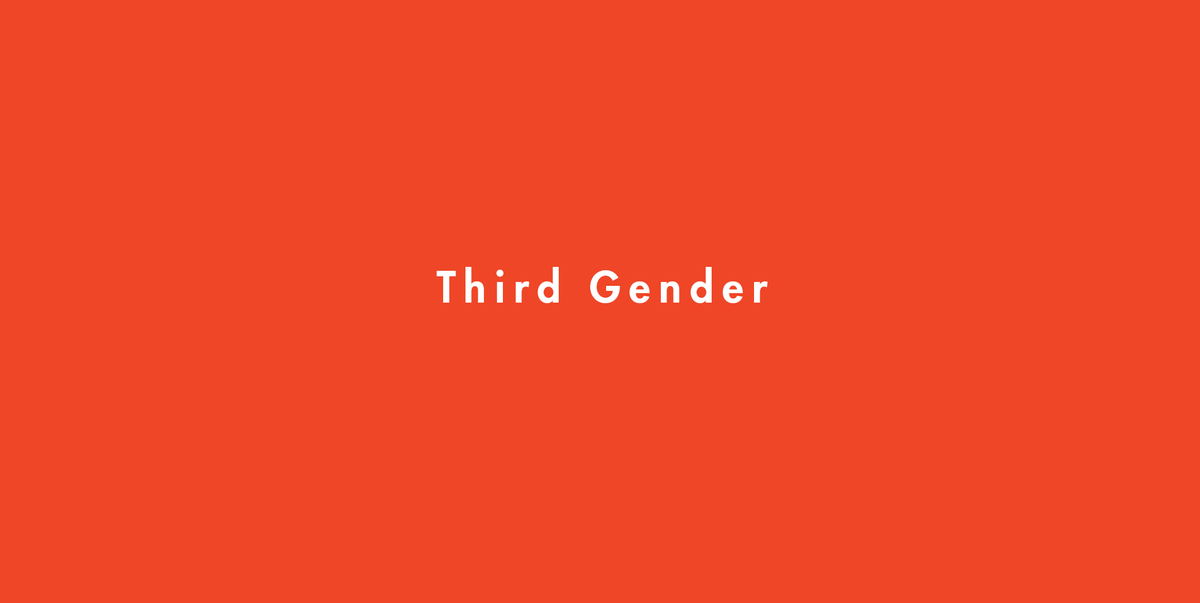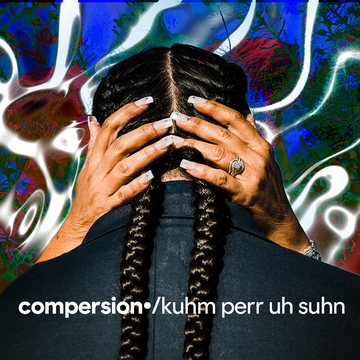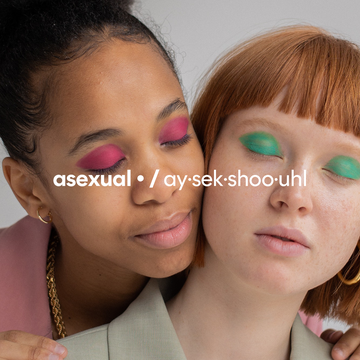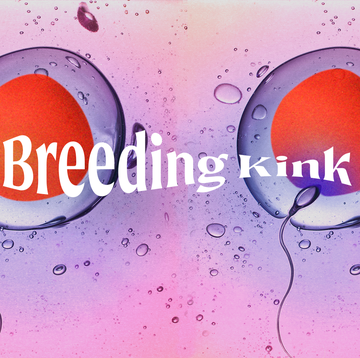To start, let’s get one thing straight: The concept of gender is extremely expansive and there are infinite ways people can identify, especially outside of the gender binary. The idea that only two genders exist is wholly false and erases the history of people who have long rejected the biological and psychological binaries of sex and gender, such as those who fall under the umbrella term “third gender.”
The term “third gender” is used to describe someone who does not identify within “the extremely limiting and wholly inaccurate notion of a gender binary,” of male and/or female, says licensed clinical psychologist Rachel Lynn Golden, PhD, a researcher on sexuality and gender identity. It can be used to describe someone who is non-binary, pangender, bigender, or anyone who expresses their gender differently than the sex they were assigned at birth.
Nevertheless, it’s important to note that the term “third gender” is not a term used in everyday life by the communities that are labeled as such. The term “seems to originate from an antiquated and academic notion that there are only three gender options—woman, man and ‘other,’” says Golden, and therefore it can be offensive and even invalidate someone’s gender identity.
“The implication of the word ‘third’ can be seen as placing them behind the other two genders—if there’s a ‘third gender,’ then what is the first gender?” explains Aniruddha Dutta, an associate professor of gender, women’s, and sexuality studies at the University of Iowa.
That said, the term “third gender” might be affirming to some people, and everyone should be able to choose the gender identity they feel best describes their experience.
Related terms:
What does it mean to be third gender?
Third gender has a history that dates back to as early as 385 B.C. when the Greek philosopher Plato wrote about a third sex that was both male and female in Symposium. Throughout history and across cultures, the term has been used to describe various diverse groups, from Roman eunuchs (castrated men who often held respected positions as servants or priests) to Albanian burneshas (virgin women who live their lives as men to gain certain rights and privileges) to feminine gay men, transgender people, and people born with both male and female biological traits—also known as intersex.
Today, the term “third sex” is more commonly used to describe communities such as hijras in South Asia (a community that includes intersex people, transgender folks, castrated men, and people who cross-dress) and muxes in Mexico, a community of transgender women and non-binary folks.
However, while outsiders might label these communities as “third gender,” that doesn’t necessarily mean they would refer to themselves as such. “In South India, many activists from transfeminine communities have dissociated themselves from the term. Instead, in areas like Tamil Nadu, they’ve adopted the English term ‘transgender’ and non-English terms like thirunangai, transwoman, and thirunambi, transman,” says Dutta.
The difference between third gender, non-binary, pangender, and bigender
“The difference is that ‘third gender’ is an academic term that generalizes all expansive genders beyond the binary as ‘third gender.’ The terms ‘non-binary,’ ‘pangender,’ ‘bigender,’ and others are terms that are best chosen by each individual,” Golden explains.
Someone who is third gender may or may not also be non-binary, pangender, or bigender. Remember: “Third gender” is a term that has historically been used in academia and by the media to describe diverse groups of people who fall outside of the gender binary of male and/or female. Someone who is transgender, for example, may subjectively fall under the umbrella term “third gender” but still be within the gender binary as a trans woman/woman or trans man/man.
It’s ultimately up to each person to determine what term works best for them, and it’s up to everyone else to honor their gender identity as well as be flexible if and when it changes.
What does third gender look like?
Like other genders and sexualities, there’s no way of knowing if someone is third gender just from physical appearance. It’s also not exactly considerate to ask someone what their sexuality or gender is, nor is it appropriate to assume either.
Dutta does note that some hijras will present themselves in ways typically associated with women, such as wearing makeup, sporting long hair, and wearing women’s attire, “but even if they present themselves like women, they might not actually identify as such.”
It’s best to go by the term the person uses to self-identify, if and when they decide to come out to you.
Signs you might be third gender
There are really no set rules or guidelines for determining gender identity or sexual orientation, but here are a few signs you might fall under the third gender umbrella, according to Golden:
1. Your gender does not align with the sex you were assigned at birth.
If the label “cisgender” (meaning you are the gender assigned to you at birth) doesn’t fit with how you understand your gender, then you might be gender expansive (an umbrella term that describes people who expand notions of gender expression and identity beyond societal norms) or third gender.
2. You find that social expectations or constraints around your gender do not fit the gender you know yourself to have.
If there’s a disconnect between the gender assigned to you at birth plus all the perceived societal norms attached to it and how you personally identify, then you might fall under one, or several, of the infinite number of identities labeled as “third gender.”
3. You identify with multiple genders or no gender at all.
Basically, there’s no limit to how you identify. You may identify as non-binary, pangender, bigender, or agender (meaning you don’t identify as any particular gender).
If you’re questioning whether or not your gender is expansive, know you’re not alone. Being gender expansive makes you part of a beautiful community that has existed across cultures and time.
There are also several ways to connect with other gender expansive or non-binary people, like online threads and tapping into resources like GLAAD and the Human Rights Campaign.
How to support friends or partners who are third gender
It’s always a good idea to ask about pronouns and share yours as well, if you feel comfortable doing so. If you misgender someone, don’t fret—just apologize and correct your mistake without making a big deal out of it. There’s no need to make someone feel like they have to explain themselves or justify their gender.
If a friend or partner decides to come out to you, it’s important to create a safe, judgment-free space. Coming out is a hard thing to do, and it’s important to make your friend or partner feel fully accepted and supported.
Another way you can support your gender expansive friend or partner is by fighting for their rights. The U.S. Department of State adding an “X” gender option for U.S. passport holders is a major win for gender expansive folks, but there are still so many more ways we can support these communities, such as fighting to end medically unnecessary operations on intersex children. The Movement Advancement Project is a great resource to learn more about how you can help advance LGBTQ2IA+ rights.
Naydeline Mejia is an assistant editor at Women’s Health, where she covers sex, relationships, and lifestyle for WomensHealthMag.com and the print magazine. She is a proud graduate of Baruch College and has more than two years of experience writing and editing lifestyle content. When she’s not writing, you can find her thrift-shopping, binge-watching whatever reality dating show is trending at the moment, and spending countless hours scrolling through Pinterest.












